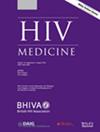Prevalence of late HIV diagnosis and its impact on mortality: A comprehensive systematic review and meta-analysis
Abstract
Objectives
The late diagnosis of HIV infection plays a crucial role in accelerating the disease progression and increasing the risk of death in the HIV population. However, there remains no consensus on the prevalence of late diagnosis or resulting mortality rates. Therefore, the objective of this meta-analysis was to assess both the prevalence of late diagnosis and resulting mortality rates, so as to provide valuable references and guidance for future research.
Methods
PubMed, Web of Science, Embase and Cochrane database were comprehensively searched. Stata 15 was utilized to conduct a meta-analysis. Potential sources of heterogeneity were explored through subgroup analysis and meta-regression. Additionally, sensitivity analysis was performed to assess the robustness and reliability of the results.
Results
This meta-analysis comprised 52 studies with 1 009 808 individuals living with HIV. The late diagnosis rate of HIV was 44.0%. The subgroup analysis showed that the late diagnosis rate was higher among individuals aged 30 years or older, men, Africans, those infected through blood transmission, those with low education, those currently unemployed and those diagnosed from 2011 to 2020. The mortality rate due to late diagnosis was 13.0%.
Conclusion
The findings of this systematic review and meta-analysis indicate a relatively high prevalence of late HIV diagnosis and a high mortality rate. The issue of delayed HIV diagnosis remains pervasive and unresolved, necessitating global efforts to address it urgently. The late diagnosis rate of HIV was higher in older individuals, men, Africans, those with low education levels, those infected through blood transmission and those diagnosed in later years. Further research is imperative to identify effective strategies for promoting early detection of HIV.

 求助内容:
求助内容: 应助结果提醒方式:
应助结果提醒方式:


